Premium Only Content
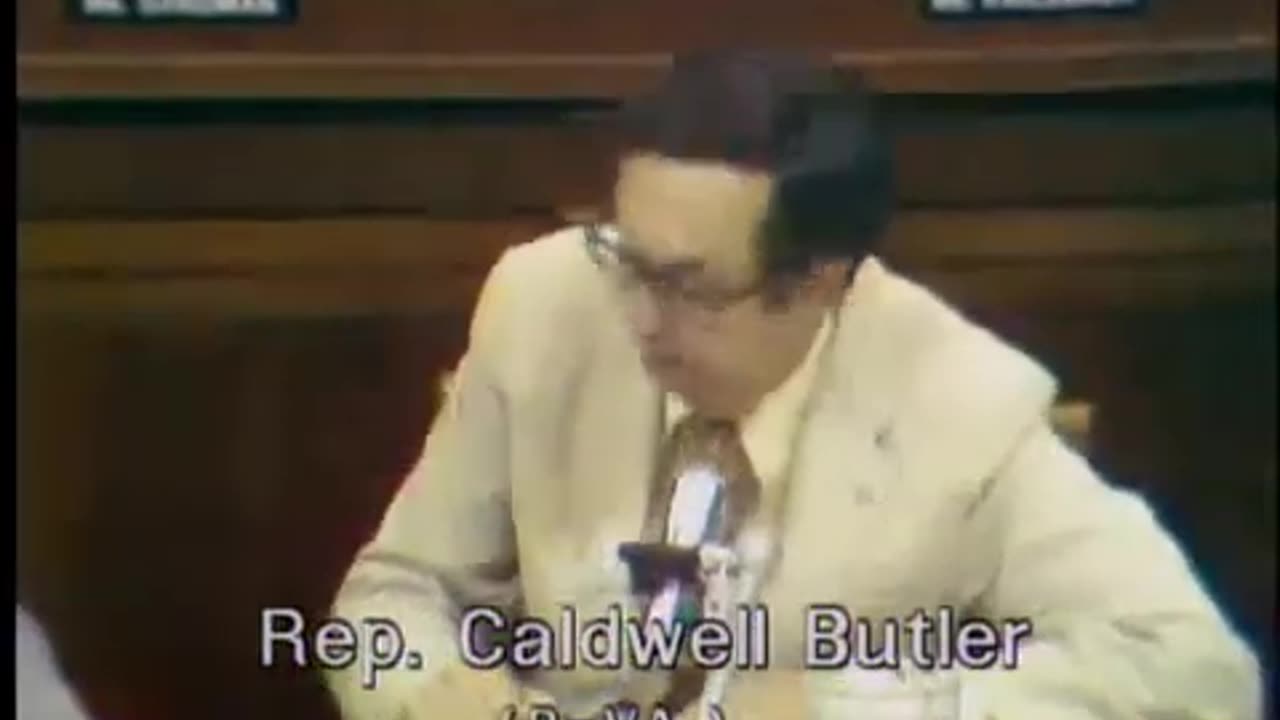
Nixon Impeachment Hearings Day 7 (1974-07-30)
The dark side of history: https://thememoryhole.substack.com/
Nixon believed his rise to power had peaked at a moment of political realignment. The Democratic "Solid South" had long been a source of frustration to Republican ambitions. Goldwater had won several Southern states by opposing the Civil Rights Act of 1964 but had alienated more moderate Southerners. Nixon's efforts to gain Southern support in 1968 were diluted by Wallace's candidacy. Through his first term, he pursued a Southern Strategy with policies, such as his desegregation plans, that would be broadly acceptable among Southern whites, encouraging them to realign with the Republicans in the aftermath of the civil rights movement. He nominated two Southern conservatives, Clement Haynsworth and G. Harrold Carswell, to the Supreme Court, but neither was confirmed by the Senate.[228]
Nixon entered his name on the New Hampshire primary ballot on January 5, 1972, effectively announcing his candidacy for reelection.[229] Virtually assured the Republican nomination,[230] the President had initially expected his Democratic opponent to be Massachusetts Senator Edward M. Kennedy (brother of the late President), who was largely removed from contention after the July 1969 Chappaquiddick incident.[231] Instead, Maine Senator Edmund Muskie became the front runner, with South Dakota Senator George McGovern in a close second place.[229]
On June 10, McGovern won the California primary and secured the Democratic nomination.[232] The following month, Nixon was renominated at the 1972 Republican National Convention. He dismissed the Democratic platform as cowardly and divisive.[233] McGovern intended to sharply reduce defense spending[234] and supported amnesty for draft evaders as well as abortion rights. With some of his supporters believed to be in favor of drug legalization, McGovern was perceived as standing for "amnesty, abortion and acid". McGovern was also damaged by his vacillating support for his original running mate, Missouri Senator Thomas Eagleton, dumped from the ticket following revelations that he had received electroshock treatment for depression.[235][236] Nixon was ahead in most polls for the entire election cycle, and was reelected on November 7, 1972, in one of the largest landslide election victories in American history. He defeated McGovern with over 60 percent of the popular vote, losing only in Massachusetts and D.C.[237]
Watergate
Main articles: Watergate scandal and Impeachment process against Richard Nixon
Nixon takes questions at 1973 press conference
The term Watergate has come to encompass an array of clandestine and often illegal activities undertaken by members of the Nixon administration. Those activities included "dirty tricks", such as bugging the offices of political opponents, and the harassment of activist groups and political figures. The activities were brought to light after five men were caught breaking into the Democratic party headquarters at the Watergate complex in Washington, D.C., on June 17, 1972. The Washington Post picked up on the story; reporters Carl Bernstein and Bob Woodward relied on an informant known as "Deep Throat"—later revealed to be Mark Felt, associate director at the FBI—to link the men to the Nixon administration. Nixon downplayed the scandal as mere politics, calling news articles biased and misleading. A series of revelations made it clear that the Committee to Re-elect President Nixon, and later the White House, were involved in attempts to sabotage the Democrats. Senior aides such as White House Counsel John Dean faced prosecution; in total 48 officials were convicted of wrongdoing.[130][238][239]
Demonstrator demands impeachment, October 1973
Duration: 33 seconds.0:33
On November 17, 1973, President Nixon held a press conference at Disney's Contemporary Resort and famously said "I'm not a crook"
In July 1973, White House aide Alexander Butterfield testified under oath to Congress that Nixon had a secret taping system and recorded his conversations and phone calls in the Oval Office. These tapes were subpoenaed by Watergate Special Counsel Archibald Cox; Nixon provided transcripts of the conversations but not the actual tapes, citing executive privilege. With the White House and Cox at loggerheads, Nixon had Cox fired in October in the "Saturday Night Massacre"; he was replaced by Leon Jaworski. In November, Nixon's lawyers revealed that a tape of conversations held in the White House on June 20, 1972, had an 18+1⁄2 minute gap.[239] Rose Mary Woods, the President's personal secretary, claimed responsibility for the gap, saying that she had accidentally wiped the section while transcribing the tape, but her story was widely mocked. The gap, while not conclusive proof of wrongdoing by the President, cast doubt on Nixon's statement that he had been unaware of the cover-up.[240]
Though Nixon lost much popular support, even from his own party, he rejected accusations of wrongdoing and vowed to stay in office.[239] He admitted he had made mistakes but insisted he had no prior knowledge of the burglary, did not break any laws, and did not learn of the cover-up until early 1973.[241] On October 10, 1973, Vice President Agnew resigned for reasons unrelated to Watergate: he was convicted on charges of bribery, tax evasion and money laundering during his tenure as governor of Maryland. Believing his first choice, John Connally, would not be confirmed by Congress,[242] Nixon chose Gerald Ford, Minority Leader of the House of Representatives, to replace Agnew.[243] One researcher suggests Nixon effectively disengaged from his own administration after Ford was sworn in as vice president on December 6, 1973.[244]
On November 17, 1973, during a televised question-and-answer session[245] with 400 Associated Press managing editors, Nixon said, "People have got to know whether or not their President is a crook. Well, I'm not a crook. I've earned everything I've got."[246]
Nixon announces the release of edited transcripts of the Watergate tapes, April 29, 1974
The legal battle over the tapes continued through early 1974, and in April Nixon announced the release of 1,200 pages of transcripts of White House conversations between himself and his aides. The House Judiciary Committee opened impeachment hearings against the President on May 9, 1974, which were televised on the major TV networks. These hearings culminated in votes for impeachment.[241] On July 24, the Supreme Court ruled unanimously that the full tapes, not just selected transcripts, must be released.[247]
The scandal grew to involve a slew of additional allegations against the President, ranging from the improper use of government agencies to accepting gifts in office and his personal finances and taxes; Nixon repeatedly stated his willingness to pay any outstanding taxes due, and later paid $465,000 (equivalent to $2.9 million in 2023) in back taxes in 1974.[248]
Duration: 7 minutes and 45 seconds.7:45
Nixon Oval Office meeting with H. R. Haldeman: the "Smoking Gun" Conversation, June 23, 1972 (Full Transcript)
Even with support diminished by the continuing series of revelations, Nixon hoped to fight the charges. But one of the new tapes, recorded soon after the break-in, demonstrated that Nixon had been told of the White House connection to the Watergate burglaries soon after they took place, and had approved plans to thwart the investigation. In a statement accompanying the release of what became known as the "Smoking Gun Tape" on August 5, 1974, Nixon accepted blame for misleading the country about when he had been told of White House involvement, stating that he had had a lapse of memory.[249] Senate Minority Leader Hugh Scott, Senator Barry Goldwater, and House Minority Leader John Jacob Rhodes met with Nixon soon after. Rhodes told Nixon he faced certain impeachment in the House. Scott and Goldwater told the president that he had, at most, only 15 votes in his favor in the Senate, far fewer than the 34 needed to avoid removal from office.[250]
Resignation
Nixon leaving the White House on Marine One shortly before his resignation became effective, August 9, 1974
In light of his loss of political support and the near-certainty that he would be impeached and removed from office, Nixon resigned the presidency on August 9, 1974, after addressing the nation on television the previous evening.[241] The resignation speech was delivered from the Oval Office and was carried live on radio and television. Nixon said he was resigning for the good of the country and asked the nation to support the new president, Gerald Ford. Nixon went on to review the accomplishments of his presidency, especially in foreign policy.[251] He defended his record as president, quoting from Theodore Roosevelt's 1910 speech Citizenship in a Republic:
Sometimes I have succeeded and sometimes I have failed, but always I have taken heart from what Theodore Roosevelt once said about the man in the arena, "whose face is marred by dust and sweat and blood, who strives valiantly, who errs and comes up short again and again because there is not effort without error and shortcoming, but who does actually strive to do the deed, who knows the great enthusiasms, the great devotions, who spends himself in a worthy cause, who at the best knows in the end the triumphs of high achievements and who at the worst, if he fails, at least fails while daring greatly".[252]
Duration: 15 minutes and 23 seconds.15:23
President Nixon's resignation speech
Nixon's speech received generally favorable initial responses from network commentators, with only Roger Mudd of CBS stating that Nixon had not admitted wrongdoing.[253] It was termed "a masterpiece" by Conrad Black, one of his biographers. Black opined that "What was intended to be an unprecedented humiliation for any American president, Nixon converted into a virtual parliamentary acknowledgement of almost blameless insufficiency of legislative support to continue. He left while devoting half his address to a recitation of his accomplishments in office."[254]
Post-presidency (1974–1994)
Pardon and illness
Further information: Pardon of Richard Nixon
President Ford announcing his decision to pardon Nixon, September 8, 1974, in the Oval Office
Following his resignation, the Nixons flew to their home La Casa Pacifica in San Clemente, California.[255] According to his biographer, Jonathan Aitken, "Nixon was a soul in torment" after his resignation.[256] Congress had funded Nixon's transition costs, including some salary expenses, though reducing the appropriation from $850,000 to $200,000. With some of his staff still with him, Nixon was at his desk by 7:00 a.m. with little to do.[256] His former press secretary, Ron Ziegler, sat with him alone for hours each day.[257]
Nixon's resignation had not put an end to the desire among many to see him punished. The Ford White House considered a pardon of Nixon, even though it would be unpopular in the country. Nixon, contacted by Ford emissaries, was initially reluctant to accept the pardon, but then agreed to do so. Ford insisted on a statement of contrition, but Nixon felt he had not committed any crimes and should not have to issue such a document. Ford eventually agreed, and on September 8, 1974, he granted Nixon a "full, free, and absolute pardon", which ended any possibility of an indictment. Nixon then released a statement:
I was wrong in not acting more decisively and more forthrightly in dealing with Watergate, particularly when it reached the stage of judicial proceedings and grew from a political scandal into a national tragedy. No words can describe the depth of my regret and pain at the anguish my mistakes over Watergate have caused the nation and the presidency, a nation I so deeply love, and an institution I so greatly respect.[258][259]
In October 1974, Nixon fell ill with phlebitis. Told by his doctors that he could either be operated on or die, a reluctant Nixon chose surgery, and President Ford visited him in the hospital. Nixon was under subpoena for the trial of three of his former aides—Dean, Haldeman, and John Ehrlichman—and The Washington Post, disbelieving his illness, printed a cartoon showing Nixon with a cast on the "wrong foot". Judge John Sirica excused Nixon's presence despite the defendants' objections.[260] Congress instructed Ford to retain Nixon's presidential papers—beginning a three-decade legal battle over the documents that was eventually won by the former president and his estate.[261] Nixon was in the hospital when the 1974 midterm elections were held, and Watergate and the pardon were contributing factors to the Republican loss of 49 seats in the House and four in the Senate.[262]
Return to public life
President Jimmy Carter and ex-Presidents Gerald Ford and Nixon meet at the White House before former Vice President Hubert Humphrey's funeral, 1978
In December 1974, Nixon began planning his comeback despite the considerable ill will against him in the country. He wrote in his diary, referring to himself and Pat,
So be it. We will see it through. We've had tough times before and we can take the tougher ones that we will have to go through now. That is perhaps what we were made for—to be able to take punishment beyond what anyone in this office has had before particularly after leaving office. This is a test of character and we must not fail the test.[263]
By early 1975, Nixon's health was improving. He maintained an office in a Coast Guard station 300 yards (270 m) from his home, at first taking a golf cart and later walking the route each day; he mainly worked on his memoirs.[264] He had hoped to wait before writing his memoirs; the fact that his assets were being eaten away by expenses and lawyer fees compelled him to begin work quickly.[265] He was handicapped in this work by the end of his transition allowance in February, which compelled him to part with many of his staff, including Ziegler.[266] In August of that year, he met with British talk-show host and producer David Frost, who paid him $600,000 (equivalent to $3.4 million in 2023) for a series of sit-down interviews, filmed and aired in 1977.[267] They began on the topic of foreign policy, recounting the leaders he had known, but the most remembered section of the interviews was that on Watergate. Nixon admitted he had "let down the country" and that "I brought myself down. I gave them a sword and they stuck it in. And they twisted it with relish. And, I guess, if I'd been in their position, I'd have done the same thing."[268] The interviews garnered 45–50 million viewers—becoming the most-watched program of its kind in television history.[269]
The interviews helped improve Nixon's financial position—at one point in early 1975 he had only $500 in the bank—as did the sale of his Key Biscayne property to a trust set up by wealthy friends of Nixon, such as Bebe Rebozo.[270] In February 1976, Nixon visited China at the personal invitation of Mao. Nixon had wanted to return to China but chose to wait until after Ford's own visit in 1975.[271] Nixon remained neutral in the close 1976 primary battle between Ford and Reagan. Ford won, but was defeated by Georgia Governor Jimmy Carter in the general election. The Carter administration had little use for Nixon and blocked his planned trip to Australia, causing the government of Prime Minister Malcolm Fraser to withhold its official invitation.[272]
In 1976, Nixon was disbarred by the New York State Bar Association for obstruction of justice in the Watergate affair. He chose not to present any defense.[273] In early 1978, he visited the United Kingdom; there, he was shunned by American diplomats, most ministers of the James Callaghan government, and two former prime ministers, Harold Macmillan and Edward Heath. He was welcomed, however, by the Leader of the Opposition, Margaret Thatcher, as well as by former prime ministers Lord Home and Sir Harold Wilson. Nixon addressed the Oxford Union regarding Watergate:
[Some people] felt that on this matter that I had not handled it properly, and they were right. I screwed it up and I paid the price.[274][275]
Author and elder statesman
President Ronald Reagan meets with his three immediate predecessors, Gerald Ford, Jimmy Carter and Nixon, at the White House, October 1981; the three former presidents would represent the United States at the funeral of Egyptian President Anwar Sadat.
In 1978, Nixon published his memoirs, RN: The Memoirs of Richard Nixon, the first of ten books he was to author in his retirement.[255] John A. Farrell deemed it one of the better presidential memoirs, candid and capturing its author's voice; he deemed its rise up the bestseller lists justified.[276] Nixon visited the White House in 1979, invited by Carter for the state dinner for Chinese Vice Premier Deng Xiaoping. Carter had not wanted to invite Nixon, but Deng had said he would visit Nixon in California if the former president was not invited. Nixon had a private meeting with Deng and visited Beijing again in mid-1979.[277]
On August 10, 1979, the Nixons purchased a 12‐room condominium occupying the seventh floor of 817 Fifth Avenue New York City[278] after being rejected by two Manhattan co-ops.[279] When the deposed Shah of Iran died in Egypt in July 1980, Nixon defied the State Department, which intended to send no U.S. representative, by attending the funeral. Though Nixon had no official credentials, as a former president he was seen as the American presence at its former ally's funeral.[280] Nixon supported Ronald Reagan for president in 1980, making television appearances portraying himself as, in biographer Stephen Ambrose's words, "the senior statesman above the fray".[281] He wrote guest articles for many publications both during the campaign and after Reagan's victory.[282] After eighteen months in the New York City townhouse, Nixon and his wife moved in 1981 to Saddle River, New Jersey.[255]
Throughout the 1980s, Nixon maintained an ambitious schedule of speaking engagements and writing,[255] traveled, and met with many foreign leaders, especially those of Third World countries. He joined former Presidents Ford and Carter as representatives of the United States at the funeral of Egyptian President Anwar Sadat.[255] On a trip to the Middle East, Nixon made his views known regarding Saudi Arabia and Libya, which attracted significant U.S. media attention; The Washington Post ran stories on Nixon's "rehabilitation".[283] Nixon visited the Soviet Union in 1986 and on his return sent President Reagan a lengthy memorandum containing foreign policy suggestions and his personal impressions of Soviet General Secretary Mikhail Gorbachev.[255] Following this trip, Nixon was ranked in a Gallup poll as one of the ten most admired men in the world.[284]
Nixon with President Bill Clinton in the residence of the White House, March 1993
In 1986, Nixon addressed a convention of newspaper publishers, impressing his audience with his tour d'horizon of the world.[285] At the time, political pundit Elizabeth Drew wrote, "Even when he was wrong, Nixon still showed that he knew a great deal and had a capacious memory, as well as the capacity to speak with apparent authority, enough to impress people who had little regard for him in earlier times."[285] Newsweek ran a story on "Nixon's comeback" with the headline "He's back".[286]
On July 19, 1990, the Richard Nixon Library and Birthplace in Yorba Linda, California, opened as a private institution with the Nixons in attendance. They were joined by a large crowd of people, including Presidents Ford, Reagan, and George H. W. Bush, as well as their wives, Betty, Nancy, and Barbara.[287] In January 1994, the former president founded the Nixon Center (today the Center for the National Interest), a Washington policy think tank and conference center.[288][289]
Pat Nixon died on June 22, 1993, of emphysema and lung cancer. Her funeral services were held on the grounds of the Richard Nixon Library and Birthplace. Former President Nixon was distraught throughout the interment and delivered a tribute to her inside the library building.[290]
-
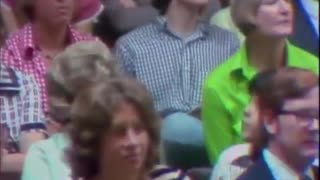 5:10:19
5:10:19
The Memory Hole
2 months agoNixon Impeachment Hearings Day 5 (1974-07-27)
574 -
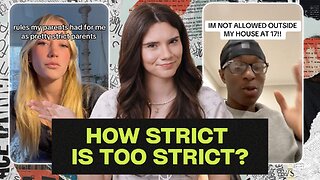 29:59
29:59
The Brett Cooper Show
3 days ago $12.74 earnedHow This Sparked A MASSIVE Parenting Debate Online | Episode 20
34.1K77 -
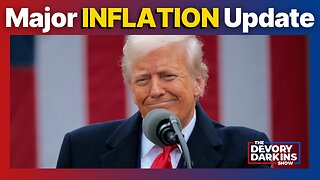 17:55
17:55
DeVory Darkins
14 hours ago $17.56 earnedCNN crushed by pronouns as Trump scores HUGE VICTORY
51.4K61 -
 2:48:33
2:48:33
Barry Cunningham
15 hours agoWATCH LIVE: MY INTERVIEW WITH LARA TRUMP! AND TODAY'S NEWS ABOUT DEMOCRATS HATING AMERICA!
86.9K26 -
 3:12:15
3:12:15
TimcastIRL
8 hours agoLiberals BLAME TRUMP For NYC Tourist Helicopter Crash After Tragic Accident | Timcast IRL
240K152 -
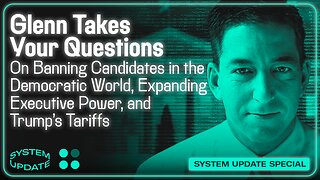 1:16:36
1:16:36
Glenn Greenwald
11 hours agoGlenn Takes Your Questions: On Banning Candidates in the Democratic World, Expanding Executive Power, and Trump's Tariffs | SYSTEM UPDATE #437
126K47 -
 40:09
40:09
Friday Beers
9 hours ago $5.77 earnedWii Golf Gets Heated: Friday Beers vs Full Squad Gaming
53.7K -
 44:53
44:53
Man in America
16 hours agoThe DISTURBING Truth About Tariffs That NO ONE Is Talking About
58.5K59 -
 32:30
32:30
Stephen Gardner
8 hours ago🚨BREAKING: Trump under INVESTIGATION for Stock Market Manipulation!
62.6K152 -
 59:50
59:50
Motherland Casino
5 hours agoMel x Zofie
29.6K5